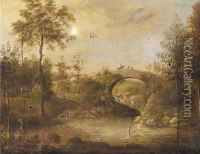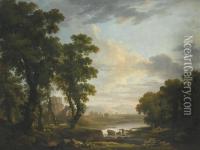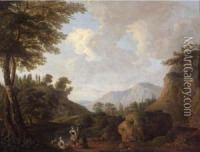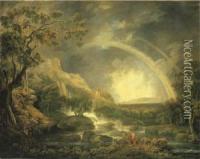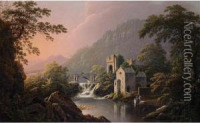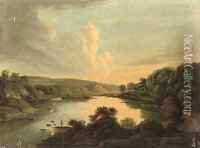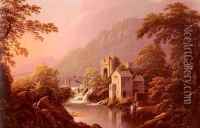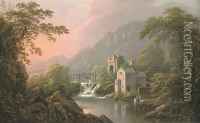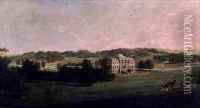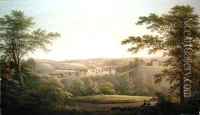George Cuitt Paintings
George Cuitt the Younger was an English artist born in 1779, primarily known for his work as a draughtsman and etcher, specializing in landscapes and architectural subjects. He was the son of George Cuitt the Elder, who also had an interest in art, though not as prominently as his son.
Cuitt displayed an early talent for drawing, and his skills were honed through self-education as well as likely informal training. Throughout his career, he traveled extensively across England, capturing the beauty of its countryside, ruins, and historic buildings. His dedication to detail and his fascination with Gothic architecture led him to produce works of remarkable precision and artistry. He had a particular interest in medieval ruins, which were a popular subject during the Romantic period, as they evoked a sense of the sublime and the passage of time.
George Cuitt's etchings and drawings were collected and admired during his lifetime. However, unlike some of his contemporaries, he did not gain widespread fame and remained relatively obscure in the larger context of art history. Despite this, his work provides an important visual record of English heritage and the Romantic era's aesthetic values.
Cuitt spent his later years in Richmond, Yorkshire, where he continued to produce art until his death in 1854. His body of work remains a testament to his meticulous approach and his deep appreciation of the English landscape and architectural history. While not a household name, George Cuitt the Younger is recognized by scholars and collectors for his contributions to British art, particularly in the realm of topographical and architectural drawings.
